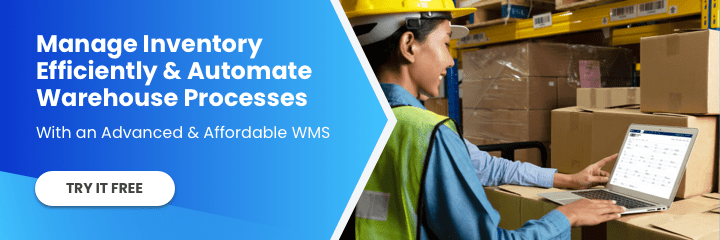It is not uncommon to see small and mid-size logistics companies struggle with business growth. Many problems are often connected to poor lead generation, a lack of sales predictability, and low conversion rates. Conversion rates refer to the process of turning leads into customers.
Click Here: Boost Your Revenue Growth Using a CRM Built for Logistics
In our previous article, we discussed some of the common sales problems these logistics companies face. In this article, we share marketing and sales strategies they can use to increase sales predictability, consistently produce leads, and convert those leads into customers.
Let’s discuss them.
1. Increase Sales Predictability
The first step is implementing a repeatable, scalable, and measurable sales process. A well-defined and executed sales process increases accountability among sales reps, decreases loss of sales opportunities, and increases revenue generation. The following is an example of a basic sales process.
- Lead Generation: Inbound and/or outbound sales and marketing strategies (more about this below) are used to collect information about potential customers (i.e., leads). Some information you might collect includes name, email address, phone number, job title, and company name.
- Lead Qualification: This is where leads collected in step 1 are reviewed to see if they align with the target customer profile. This step also evaluates leads’ readiness, willingness, and ability to make (or influence) a buying decision.
- Need Assessment: Here, sales reps or advisors identify the customer’s needs and match those needs to the company’s product or service.
- Proposal & Negotiation: In this stage, a formal customer proposal is presented and negotiated, if necessary.
- Close & Deliver: In this final step, the deal is closed, and the service is delivered as negotiated.
A defined sales process is the best way to grow your business. A recent survey by Harvard Business Review shows an 18% difference in revenue growth between companies that defined a formal sales process and companies that didn’t.
We’ve created a visual representation of this sales process for you to download here and use as a reference point.
2. Generate Leads Consistently
For a business to see consistent revenue growth, it must have a sales and/or marketing strategy that generates a steady flow of leads. Some examples of sales and marketing strategies you could try include:
Inbound Lead Generation
Inbound lead generation attracts leads by producing and sharing information that draws customers to the company’s website—also known as inbound marketing.
Logistic companies can implement inbound marketing for lead generation through content marketing, search engine optimization (SEO), and social media.
- Content Marketing: The strategy of producing relevant and valuable content (e.g., blogs, ebooks, videos, etc.) that attracts a clearly defined target audience to the company website. The key here is “valuable and relevant content.”
- Search Engine Optimization: A method of structuring content on your website to increase search engine ranking for specific search terms in organic search results. This will ensure your website’s visibility in the results when potential customers search for words relevant to your business, such as “freight forwarding services” or “3PL”.
- Social Media Marketing: The technique of gaining website traffic through social networks by promoting valuable content, information, and offers while encouraging readers to share it with others.
Outbound Lead Generation
In contrast with inbound, outbound lead generation is about reaching out to customers who have not yet expressed interest in the company and its services.
Logistics sales departments can implement outbound lead generation through cold calling, direct sales, and events.
- Cold Calling: This is a widely used approach of making unsolicited calls to qualified leads to sell services or set sales appointments.
- Direct Sales: Another traditional approach in which a sales rep visits the potential customer in person and briefly presents the company to a decision-maker or an influencer.
- Events: A business-to-business (B2B) company strategy to capture leads and generate sales. Companies mostly use events to present, display, and educate prospects about the company’s services.
Implementing at least one of these strategies will boost logistics sales and spur revenue growth, but combining both will kick business into high gear. Below is an example of a combined inbound/outbound marketing process.
3. Increase Sales Conversions
Now that we have covered strategies for consistent sales lead generation, the next challenge is to convert the maximum number of leads into customers. Here are three approaches to increase lead conversion rates.
Lead qualification is reviewing, selecting, and prioritizing leads that are more likely and ready to do business. Not all leads are equal, and not all leads are ready to buy, so you must be qualifying leads.
As part of this process, the company needs to identify who their target customers are using demographic information such as:
- Industry Type
- Company Size
- Company Revenue
- Decision Makers
Then, identify where the lead is in the buyer’s journey. To learn more about the buyer’s journey, watch this video.
Brand Credibility
This is one of the most important psychological factors in converting leads and prospects into customers. Customers’ impressions of the company’s ability to deliver service and reputation directly impact lead-to-customer conversion rates.
Establishing brand credibility is crucial. To do this, it’s important to clearly define the company’s mission, vision, and core values. Once defined, it’s essential to live by them consistently. Once these foundations are in place, the company can publicize its brand through a website, social networks, and PR campaigns.
Differentiator
Establishing a business differentiator is another critical tactic. If a competitor has established credibility and offers the same services at a competitive price, potential customers are likely to take their business there automatically.
To avoid this, logistics companies should avoid trying to serve every market segment. A better strategy is to focus the business on a specific segment (e.g., one country, cargo type, or industry), become the best in that segment, and amplify this differentiator.
Real opportunities exist for supply chain and logistics companies. These opportunities are available to those willing to go the extra mile and get serious about sales and marketing. Organizations that do so can potentially increase revenue by 18–28 percent. Focusing on creating a strong marketing process is essential. This process should consistently generate leads. Also, having a sales strategy that effectively converts those leads into customers is crucial. This approach is the best way to ensure your organization’s future success.
In addition to the logistics sales strategies, check out the 5 steps you should follow to create an effective logistics marketing plan.
You can also check our other article, where we share some of the best tools that companies use to define and enforce a sales process, generate leads consistently, and increase sales conversions.
If you want more warehouse content or are curious about “Warehouse Digitalization,” you can follow us on LinkedIn, YouTube, X, or Facebook. You can also message us through our contact page if you have other inquiries. We’ll be very glad to help.












